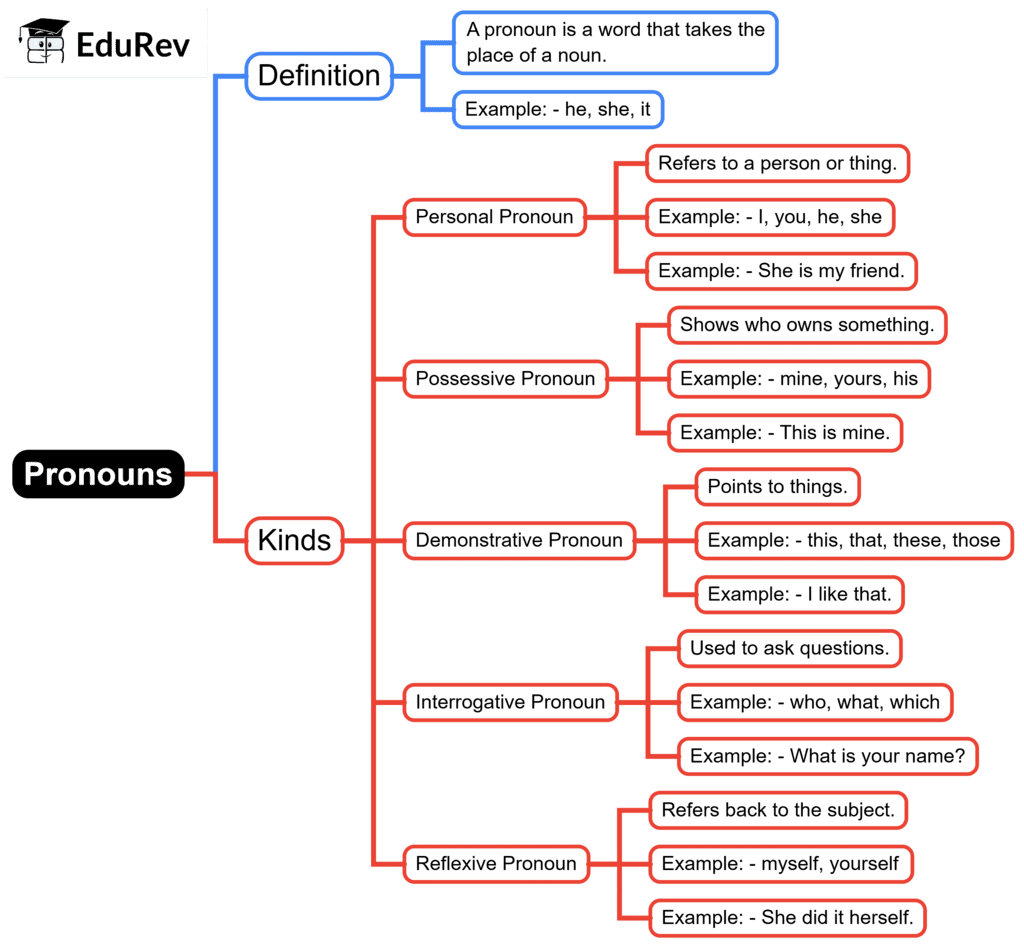Class 4 Exam > Class 4 Notes > English Grammar Class 4 > Mind Map: Pronoun And Its Kinds
Mind Map: Pronoun And Its Kinds | English Grammar Class 4 PDF Download

The document Mind Map: Pronoun And Its Kinds | English Grammar Class 4 is a part of the Class 4 Course English Grammar Class 4.
All you need of Class 4 at this link: Class 4
|
36 videos|247 docs|27 tests
|
FAQs on Mind Map: Pronoun And Its Kinds - English Grammar Class 4
| 1. What are the different kinds of pronouns? |  |
Ans. Pronouns can be categorized into several types: personal pronouns (I, you, he, she, it, we, they), possessive pronouns (mine, yours, his, hers, its, ours, theirs), reflexive pronouns (myself, yourself, himself, herself, itself, ourselves, yourselves, themselves), demonstrative pronouns (this, that, these, those), and interrogative pronouns (who, whom, whose, which, what).
| 2. How do personal pronouns function in a sentence? |  |
Ans. Personal pronouns replace specific nouns in a sentence to avoid repetition. They can act as the subject (e.g., "She runs fast") or the object (e.g., "I saw him") of a verb. Their form changes based on the grammatical role they play in the sentence.
| 3. Can you explain the difference between possessive pronouns and possessive adjectives? |  |
Ans. Possessive pronouns (e.g., mine, yours) stand alone and indicate ownership, while possessive adjectives (e.g., my, your) precede nouns and describe ownership in relation to those nouns. For example, "This book is mine" uses a possessive pronoun, while "This is my book" uses a possessive adjective.
| 4. What is the role of reflexive pronouns in sentences? |  |
Ans. Reflexive pronouns refer back to the subject of the sentence and are used when the subject and the object are the same. For instance, in the sentence "She taught herself," "herself" indicates that the subject (she) performed the action on herself.
| 5. How are interrogative pronouns used in questions? |  |
Ans. Interrogative pronouns are used to ask questions and are typically placed at the beginning of a question. Examples include "Who is coming?" and "What do you want?" They help in gathering information about a person or thing.
Related Searches
















